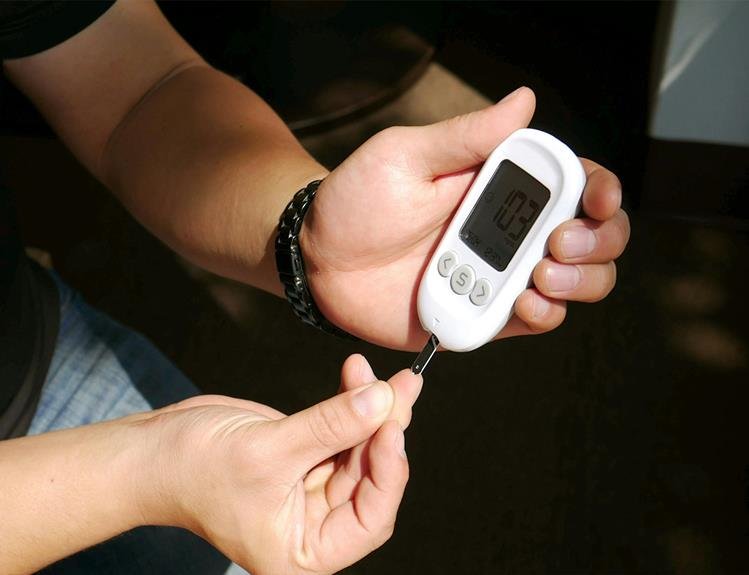Expert Insights: How to Cope With Diabetes-Related Amputations
Imagine standing at a crossroads, where the path diverges into uncertainty.
The journey ahead may seem daunting, but with expert insights on coping with diabetes-related amputations, you can navigate these uncharted territories with resilience.
Through a combination of understanding the amputation process, physical rehabilitation techniques, emotional support strategies, lifestyle adjustments, and long-term care, you can embark on a path towards healing and adaptation.
Understanding the Amputation Process
Do you know how amputations are performed for diabetes-related complications?
When diabetes leads to severe complications such as infections or poor circulation, amputation may be necessary to prevent further health risks. The process typically begins with a thorough evaluation by a medical team, including doctors and specialists, to determine the extent of the damage and the best course of action.
Once the decision for amputation is made, you'll undergo pre-operative preparations such as blood tests, imaging scans, and discussions about the procedure.
On the day of the surgery, you'll be given anesthesia to ensure you're comfortable and pain-free during the operation. The surgeon will then remove the affected part of the limb, taking care to minimize bleeding and ensure a clean cut to promote proper healing.
After the amputation, you'll receive post-operative care to manage pain, prevent infections, and promote recovery. Rehabilitation specialists will work with you to adjust to any physical changes and regain mobility through exercises and prosthetic fittings.
Physical Rehabilitation Techniques
What physical rehabilitation techniques can help you adjust and regain mobility after a diabetes-related amputation? Physical rehabilitation plays a crucial role in your recovery journey.
One key technique is strength training to enhance muscle function and support around the amputation site. Through targeted exercises, you can improve your balance, stability, and overall strength, aiding in the transition to using a prosthetic limb if applicable.
Additionally, practicing mobility exercises such as gait training helps you relearn how to walk or move with your new physical abilities. Occupational therapy is another valuable component of rehabilitation, focusing on daily tasks and adapting to any functional limitations post-amputation.
Utilizing assistive devices like canes or walkers may also facilitate your mobility during the rehabilitation process. Remember, consistency and patience are vital as you work with your healthcare team to tailor a rehabilitation plan that suits your specific needs and goals.
Emotional Support Strategies
Seeking emotional support from loved ones and mental health professionals can significantly aid in coping with the emotional challenges that may arise after a diabetes-related amputation. It's essential to communicate openly with your family and friends about your feelings and needs. Let them know how they can support you during this difficult time. Additionally, consider joining a support group for individuals who've gone through similar experiences. Connecting with others who understand what you're going through can provide a sense of belonging and validation.
Don't hesitate to seek help from a mental health professional if you're struggling to cope with feelings of grief, anger, or sadness. Therapy can provide you with a safe space to explore your emotions and develop healthy coping mechanisms. Remember, it's okay to ask for help when you need it.
Engaging in activities that bring you joy and practicing self-care can also support your emotional well-being. Whether it's spending time with a pet, engaging in a hobby, or practicing mindfulness, finding moments of peace and positivity can help you navigate the emotional impact of an amputation.
Lifestyle Adjustments for Daily Living
Making adjustments to your daily lifestyle is crucial following a diabetes-related amputation, ensuring you can adapt and thrive in your new circumstances. One key lifestyle adjustment is modifying your living space to enhance accessibility. Arrange furniture for easy navigation, install handrails, and consider assistive devices like grabbers or shower chairs. Additionally, adapting your wardrobe by choosing comfortable clothes that are easy to put on can make dressing simpler.
Meal planning is another vital aspect. Focus on a balanced diet to support healing and overall health. Consider consulting a dietitian to create a personalized meal plan that fits your dietary needs. Regular physical activity remains important. Explore low-impact exercises like swimming or chair yoga to maintain fitness without straining your body.
Establishing a routine that includes wound care, medication management, and doctor's appointments is essential. Keep a schedule to stay organized and ensure you're prioritizing your health needs. Finally, maintaining a positive mindset and seeking support from loved ones or support groups can help you navigate these lifestyle adjustments with confidence.
Long-Term Care and Monitoring
To ensure proper management and maintenance of your health post-amputation, consistent long-term care and monitoring are essential. Regular follow-up appointments with your healthcare team are crucial to monitor your wound healing progress, prevent infections, and address any concerns promptly. During these visits, your healthcare provider will assess your residual limb for any changes, provide guidance on wound care, and adjust your treatment plan as needed.
In addition to medical appointments, self-monitoring plays a vital role in your long-term care. Keep an eye on your residual limb for any signs of infection, such as redness, swelling, increased pain, or discharge. It's also essential to maintain a healthy lifestyle, including proper nutrition, regular exercise, and blood sugar management, to support overall healing and well-being.
Long-term care and monitoring after an amputation require diligence and proactive attention to your health. By staying engaged with your healthcare team, practicing good self-care, and making necessary lifestyle adjustments, you can promote optimal healing and long-term success in managing life post-amputation.
Frequently Asked Questions
How Can Diabetes-Related Amputations Affect Relationships With Family and Friends?
Having diabetes-related amputations can strain relationships with family and friends. They may not fully understand your challenges, causing misunderstandings. Open communication, education about your condition, and support from loved ones can help navigate these difficulties and strengthen bonds.
Are There Any Specific Financial Resources or Assistance Programs Available for Individuals Who Have Undergone Amputations Due to Diabetes?
Facing financial challenges after diabetes-related amputations? There are specific resources and assistance programs available to help you navigate this difficult time. Don't hesitate to reach out for support and guidance. You're not alone.
What Are Some Common Misconceptions About Diabetes-Related Amputations That You Encounter in Your Practice?
When discussing diabetes-related amputations, it's common to encounter misconceptions about the causes being solely related to poor lifestyle choices. Remember, diabetes is a complex condition influenced by various factors, not just personal behaviors.
How Can Individuals With Diabetes-Related Amputations Educate Others in Their Community About Their Experiences and Challenges?
You can inspire understanding by sharing your journey with diabetes-related amputations. Educate others about your challenges and triumphs. Your story is a beacon of awareness, lighting the path towards empathy and support in your community.
Are There Any Emerging Technologies or Advancements in Prosthetics That Individuals With Diabetes-Related Amputations Should Be Aware Of?
You should stay informed about emerging prosthetic technologies for diabetes-related amputations. New advancements offer improved functionality and comfort. Stay connected with your healthcare provider to explore the options that best suit your needs and lifestyle.
Conclusion
As you navigate the challenges of diabetes-related amputations, remember that you aren't alone. By focusing on physical rehabilitation, seeking emotional support, making lifestyle adjustments, and committing to long-term care, you can overcome any obstacles that come your way.
Embrace the journey ahead with determination and resilience, knowing that every step you take towards healing is a step towards a brighter future. Keep moving forward, one step at a time.






